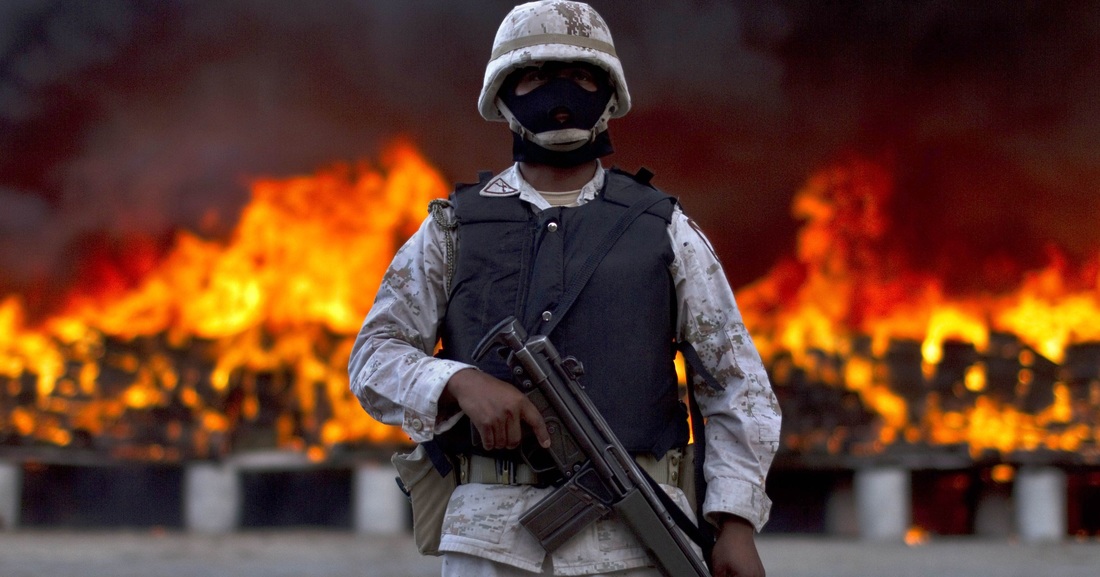|
Story by Nareg Balian '18 Image Source Since 1971, the United States and Mexico have been involved in what President Nixon termed “A War on Drugs,” which has been costly in both human and economic terms. PBS reported that drug use in 2014 killed over 50,000 US citizens, and gang-related deaths in Mexico since 2007 have exceeded 160,000 people. According to CNN, the drug war has cost the US over 1 trillion dollars. Furthermore, the war on drugs has also increased incarceration rates within the US due to mandatory minimum sentences and other harsh drug possession charges (Huffington Post). To combat the growing drug threat, the Mexican government, with the support of the US, has authorized a “kingpin” strategy (Dallas Morning News). The kingpin strategy involves US officials identifying and eliminating the heads of major cartels. However, this policy has ultimately failed. The decentralization of authority caused by this government intervention fractured the targeted cartels into hundreds of smaller independent groups. (Business Insider). As a result, kidnappings and murders have not stalled. In his article on the drug war on Odyssey Online, Patrick Hooks summed up the efficacy of the kingpin strategy: “Mexican authorities adopted the idea that if one cuts off the head of a snake, the rest of the snake will die. Unfortunately for the people of Mexico, the snake did not die; it grew into a dozen snakes that tore the country apart.”
In light of the violence caused by the failure of the kingpin strategy, the Drug Enforcement Administration has authorized new military style commando squads in a program called FAST [Foreign-Deployed Advisory and Support Teams] to battle drug cartels (New York Times). Albeit the new measures, violence is still prevalent and murders and kidnappings are still at extremely high levels. Due to this violence, there has been much backlash and criticism within the United States on its drug war policy, with Visual Economics calling it a “costly and losing effort.” A 2015 report from US News argued that the US should focus on helping addicted US citizens rather than targeting the cartels individually. Nevertheless, the war on drugs continues with no end seemingly in sight. The US’ war on drugs has come at a tremendous cost and with suboptimal results. Illegal drug use is still a problem in the US, and many people are seeing the efforts made by the US government as a failure and are pushing for a reform to the overall drug strategy (US News). Mexico, on the other hand, continues to suffer from drug related violence on a massive scale. Therefore, the question becomes: what US foreign policy efforts are the most efficacious in helping to end the war on drugs both domestically and in foreign regions such as Mexico? One response would be to cut funding and operations with the drug war, with the understanding that the war is too costly and does not provide results. Another would be to increase aid to Mexico and hope that their government, in tandem with US military operations, would be able to end the drug war problem at its source there. Finally, another viable option would be to reform and shift US policies and resources towards drug rehabilitation and prevention rather than fighting cartels and drug criminals. Option one, cutting funding, has the potential to increase exponentially drug-related crime both in Mexico and in the US. Option two, increasing aid to Mexico, on the other hand, expands the drug war costs and could negatively affect the US economy. Option three, by focusing entirely on US citizens and devoting US resources to helping US citizens, provides a way for the drug war to be won domestically. This third option seems to be the most logical as it will focus on reducing demand through education, support, and reform. Curbing demand domestically would reduce the cartels’ financial incentives for distributing illegal drugs which would hurt the supply of illegal drugs. Ultimately, by cutting supply and reducing demand, the US can finally bring an end to its war on drugs.
0 Comments
Leave a Reply. |
